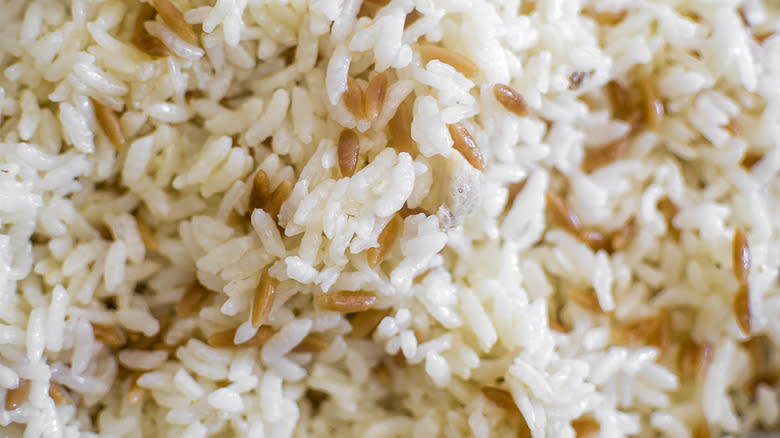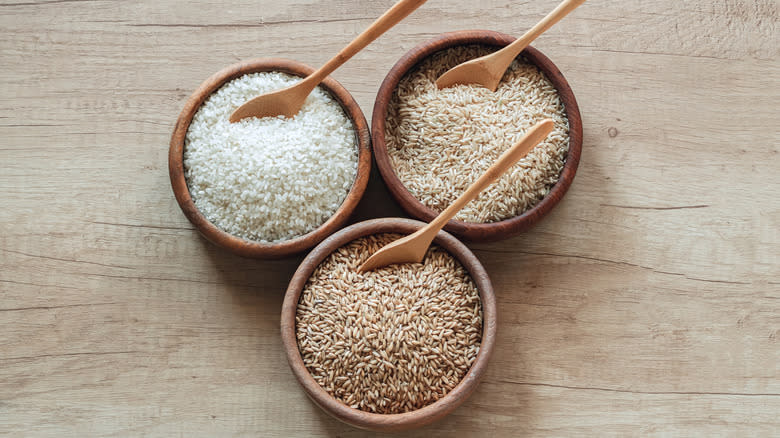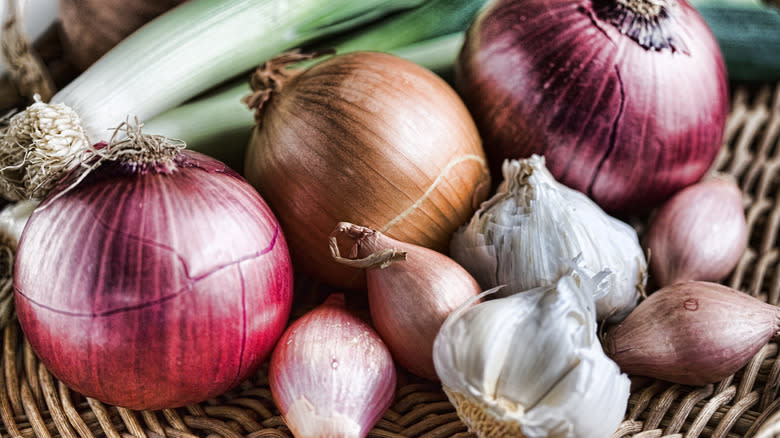The Ingredient Tips You Need For A Perfect Rice Pilaf

Rice is a pantry staple for good reason, and it can stand on its own as a simple side or fill out the base of a savory bowl. But perhaps more importantly, rice can absorb aromatic flavors as it cooks, becoming rice pilaf, a tasty dish that's beloved around the world. There are so many variations of pilaf recipes, however, that it can be hard to decide what to put in the pot. We spoke to Jenn Segal, chef, blogger, and cookbook author of Once Upon a Chef for a few guidelines on rice pilaf perfection.
Her number one tip for optimal results is to skip the water and use broth to cook the rice. "Using broth instead of water adds a depth of flavor that you just can't get from water alone. Whether it's chicken, beef, or vegetable broth, it infuses the rice with a savory richness that makes the dish so much more flavorful and satisfying," says Segal. She also recommends toasting the rice in butter or oil before adding any liquid to give the dish even more flavor.
Broth isn't the only pilaf-making tip she shares with Daily Meal. Read on for her suggestions regarding which type of rice to use and what add-ins to include for maximum flavor.
Read more: 11 Of The Best Cooking Tips From Bobby Flay
Look For Long Grain Rice Varieties

Unlike starchy rice dishes such as risotto and sushi, where the grains are supposed to stick together, rice pilaf is a dish that shines when each grain is fluffy and flavorful. For this reason, Segal advises using long-grain varieties of rice like basmati. "The grains cook up fluffy and separate, which is ideal for pilaf. Basmati also has a slightly nutty flavor that adds an extra layer of deliciousness to the dish," she says, adding, "If you can find extra-long grain basmati, even better."
If you can't find basmati or don't have it in your pantry, varieties like jasmine, brown, and American long-grain rice will also work well in a pilaf recipe. Even parboiled (aka converted) rice is a good choice because it cooks up into individual grains that are suitable for pilaf. However, be aware that converted rice tends to take a little bit longer to cook than other varieties if you're planning to use it for a preexisting recipe, like rice pilaf with apples and pumpkin seeds.
Choose Aromatic Spices And Ingredients For Rice Pilaf

Of course, a rice pilaf is just a bowl of rice without the extra ingredients to make it interesting. There are millions of recipes out there for making this dish, but Segal says you can never go wrong with classic aromatic veggies and simple spices that pack a punch.
"A great rice pilaf really shines with a mix of aromatics and spices like onions, garlic, and a pinch of saffron or turmeric for beautiful color and subtle flavor," says Segal. Saffron will give your pilaf a warm, earthy, sweet flavor, but don't overdo it because a little goes a long way (plus it's very expensive). In addition to its vibrant color, turmeric will also add a nutty sweetness along with a bit of ginger and peppery notes to the dish.
There are also a ton of extras you can add to rice pilaf to make the dish even more satisfying, according to Segal. "Adding ingredients like nuts, dried fruits, and fresh herbs can elevate the dish, giving it wonderful texture and pops of flavor," she says.
Read the original article on The Daily Meal.


